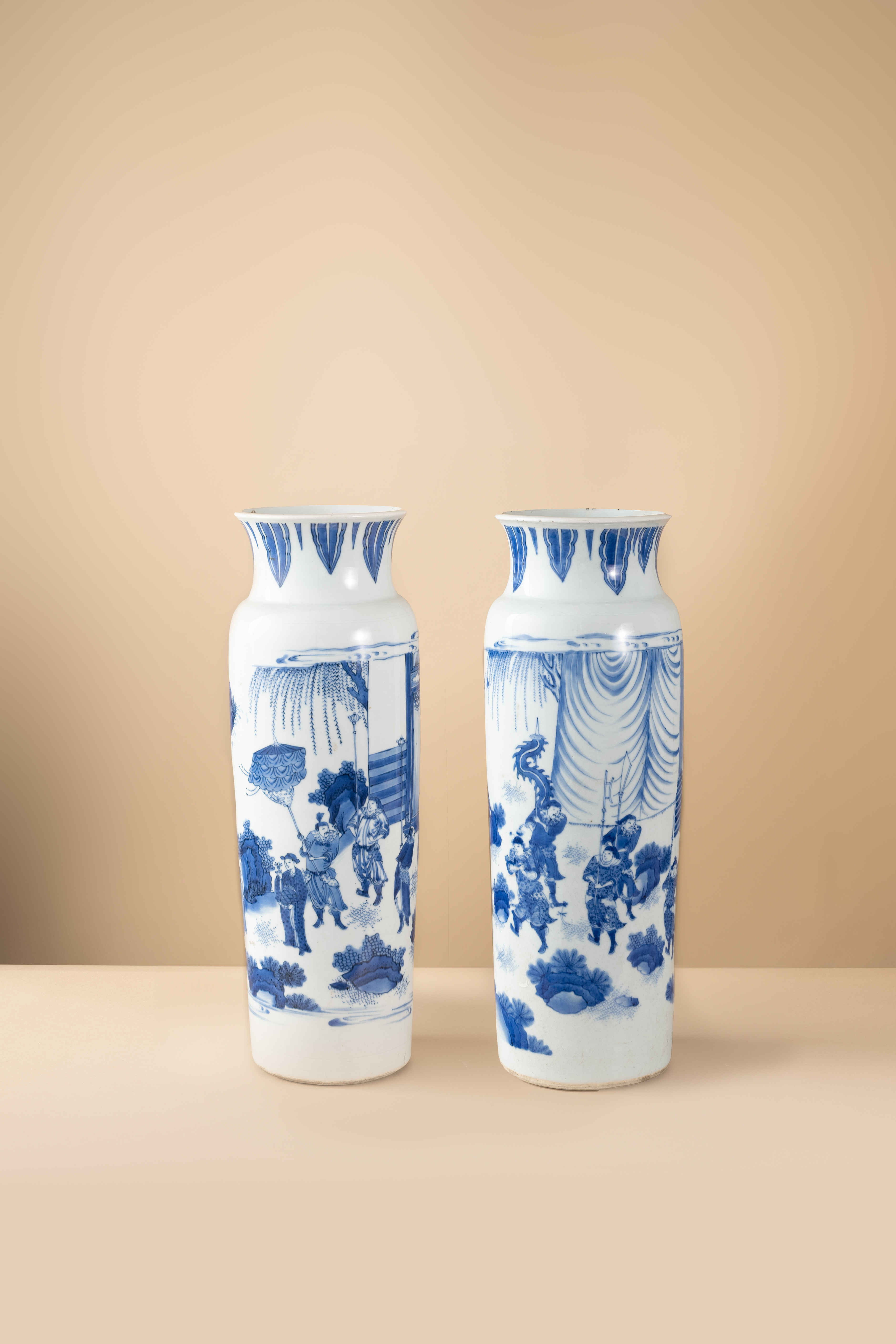Fine Asian Art - 12th November 2024
Lot 5
A PAIR OF CHINESE BLUE AND WHITE 'WENWU SHUANGQUAN' SLEEVE VASES
Estimate £25,000 - £35,000 | Hammer £56700
Inc. Buyers Premium
Description

A PAIR OF CHINESE BLUE AND WHITE 'WENWU SHUANGQUAN' SLEEVE VASES
TRANSITIONAL PERIOD C.1640
The cylindrical bodies rising to waisted necks with slightly everted rims decorated with borders of plantain leaves, one painted with a warrior and three attendants approaching a scholar in a rocky landscape, the scholar gestures with his left hand towards the sun behind him, the other painted with a narrative scene depicting an official offering an osmanthus spray to a kneeling couple, surrounded by a troop of attendants bearing a parasol and polearms, both with wispy clouds to the reverse, the necks and feet finely incised with anhua bands, 45.8cm. (2)
Provenance: from the collection of the 9th Marquis of Waterford, Henry Nicholas de la Poer (b.1958) of Curraghmore, County Waterford.
Cf. Bonhams London, 2nd November 2020, lot 247 for a related Transitional sleeve vase depicting a similar scene to the former vase, see also Sotheby's Hong Kong, 30th November 2021, lot 404 for another related sleeve vase.
The scene depicted on one vase illustrating a scholar gesturing to the sun alludes to a rebus, the rising sun suggests a rise in prosperity. The phrase 'pointing at the sun' (zhi ri) is a pun on 'day by day', suggesting the blessing zhiri gaosheng (may you day by day rise in rank). During the turbulent decline of the Ming Dynasty, many intellectuals sought refuge and opportunity within the bureaucratic system, viewing it as a pathway to influence, stability, and prestige. The allure of bureaucratic advancement remained strong, offering a sense of purpose and the potential for upward mobility. For a discussion about the motif of official appointments on seventeenth century porcelain, see JB Curtis, Chinese Porcelains of the Seventeenth Century: Landscapes, Scholars' Motifs and Narratives, p.144. Depicted on the other vase, the fragrant flower guihua, osmanthus, which blooms during the eighth lunar month, coincides with the Mid-Autumn Festival. It is also a homophone for nobility. The scene on this vase relates to the cherished custom of zhegui, which literally means picking an osmanthus branch. The phrase originates from a legend of a magnificent osmanthus tree flourishing in the Lunar Palace and it signifies an official's blooming career and symbolizes the heartfelt wish for gaining noble status and success in the Imperial exams.
明末清初 青花指日高陞折桂高中圖筒瓶 一對
來源:愛爾蘭沃特福德克拉莫爾第九代沃特福德侯爵Henry Nicholas de la Poer (1958年生) 的收藏。